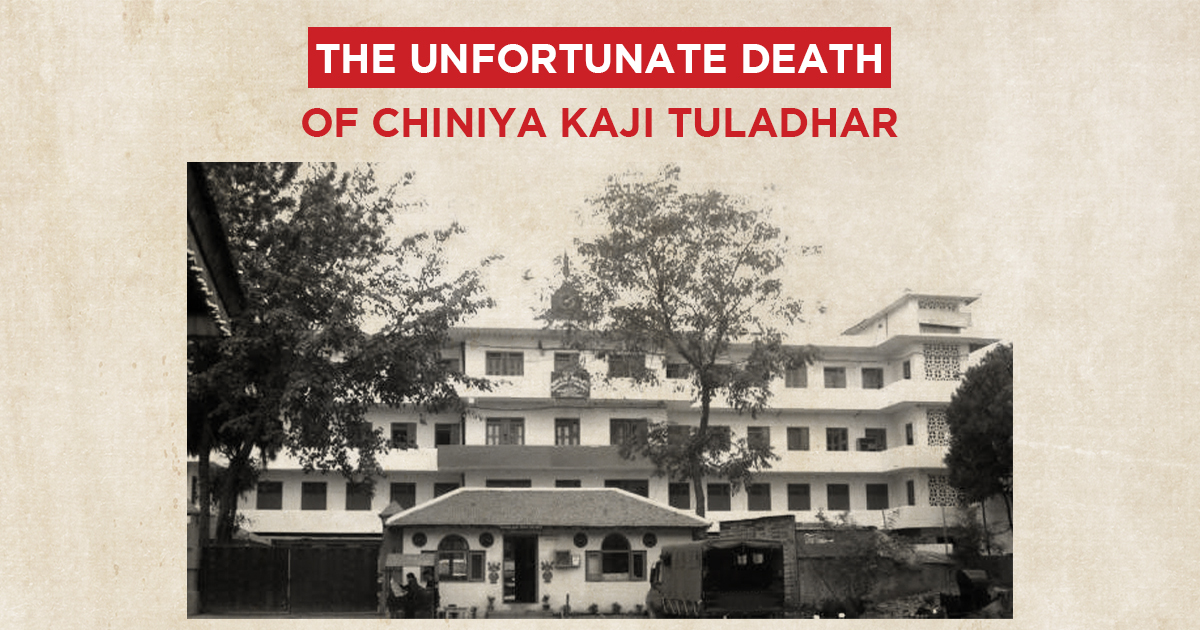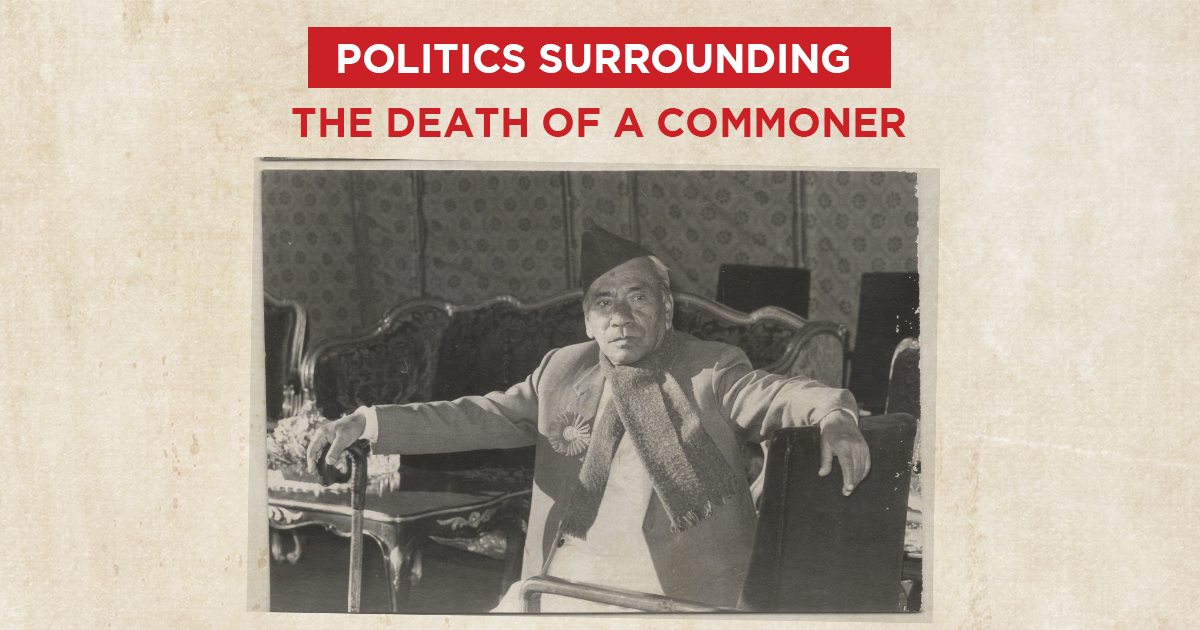The unfortunate death of Chiniya Kaji Tuladhar

As shared by Ganesh Man Singh:
Meanwhile, in 1951, political protests began to intensify – the communists were protesting, Gorkha Dal was protesting, so much so, even the student wing of our own party – Nepal Student Union began demonstrating against their own government too.
The increased protests and the ensuing violence gave a grim look to Nepal’s internal affairs – making the Home Ministry look bad. Earlier, after the Football Match incident, the Home Ministry had mandated prior permissions for any peaceful rallies/protests – however protests continued unabated.
One day, police arrested around five to seven student leaders of NSU and took them into custody at the Hanuman Dhoka Durbar. After the police had left, a member of the union got up, and citing the ‘prison break of Bastille’ as an important step towards revolution – urged the remaining members to do the same.
The group now had a purpose.
At the Hanuman Dhoka, police officers were got off-guard, and a clash ensued. After the mob got angrier, police had no option but to fire a few round of bullets to disperse the crowd.
After hearing the gunshots, the mobs began to disperse – and worse, a stampede occurred. Several people were injured, and all of them taken to the nearby Bir Hospital.
Unfortunately, one of the protesters, a newly inducted member of Nepal Student Union, Chiniya Kaji Tuladhar, died during the course of his treatment.
Politics surrounding a death of a commoner:

In the words of Ganesh Man Singh:
It was around nightfall when Chiniya Kaji died – the first thing the communists did after hearing the news was to wrap him in their party flag. Family members were barred from receiving his body, and the leaders declared him a martyr.
Scores of people from different walks of life came to visit the injured – amongst them was Indian Ambassador CPN Singh. The Indian Ambassador was accompanied by visiting Indian journalists – the next morning, Indian media published several reports about police brutality in Nepal under the leadership of B P Koirala.
Meanwhile, PM Mohan Shumsher also visited Chiniya Kaji’s home and assured their family of justice.
The next morning, before the sun had risen, a group of people gathered outside the hospital. Fearing worsening tensions, a meeting of the Council of Ministers under the presence of King Tribhuvan was called.
Accusations from both sides were high – one against B P Koirala, and the other for.
King Tribhuvan, after listening to both sides, ordered the peaceful passage of Chiniya Kaji’s body to his family members for the final rites. The orders were followed through.
The next evening, the final rites of Chiniya Kaji were performed under the watch of thousands of valley residents.
B P Koirala announces his decision to resign:

One day, B P Koirala shared his decision to resign as Nepal’s Minister of Home Affairs with Singh.
Singh, who believed Koirala’s decision, was based on recent events, responded:
“How can that be possible? You are our leader and if you resign, so will I”.
To this Koirala responded:
“That is not the case Ganesh Man Ji. You took my decision lightly – as if I have arrived upon it in haste. In fact it is the opposite. Seeing the resistance from our own party members, my continuing in the post is going to affect the party, and its activities. It is best I resign – after all the party’s interest is above mine – and we have to ensure that the party’s objectives are prioritized”.
“I will communicate my decision to Subarna Ji, and then announce it within the party”, Koirala added.
Singh was convinced – and decided that Koirala’s explanation made sense.
Therefore, Koirala announced his decision – first with the party, and then tendered his resignation to the king.
Because the government was a coalition government between Rana ministers and Congress ministers, Koirala’s resignation automatically implied that Mohan Shumsher would have to resign too.
Thus he did, and the Congress-Rana cabinet of 1951 AD was dissolved.




